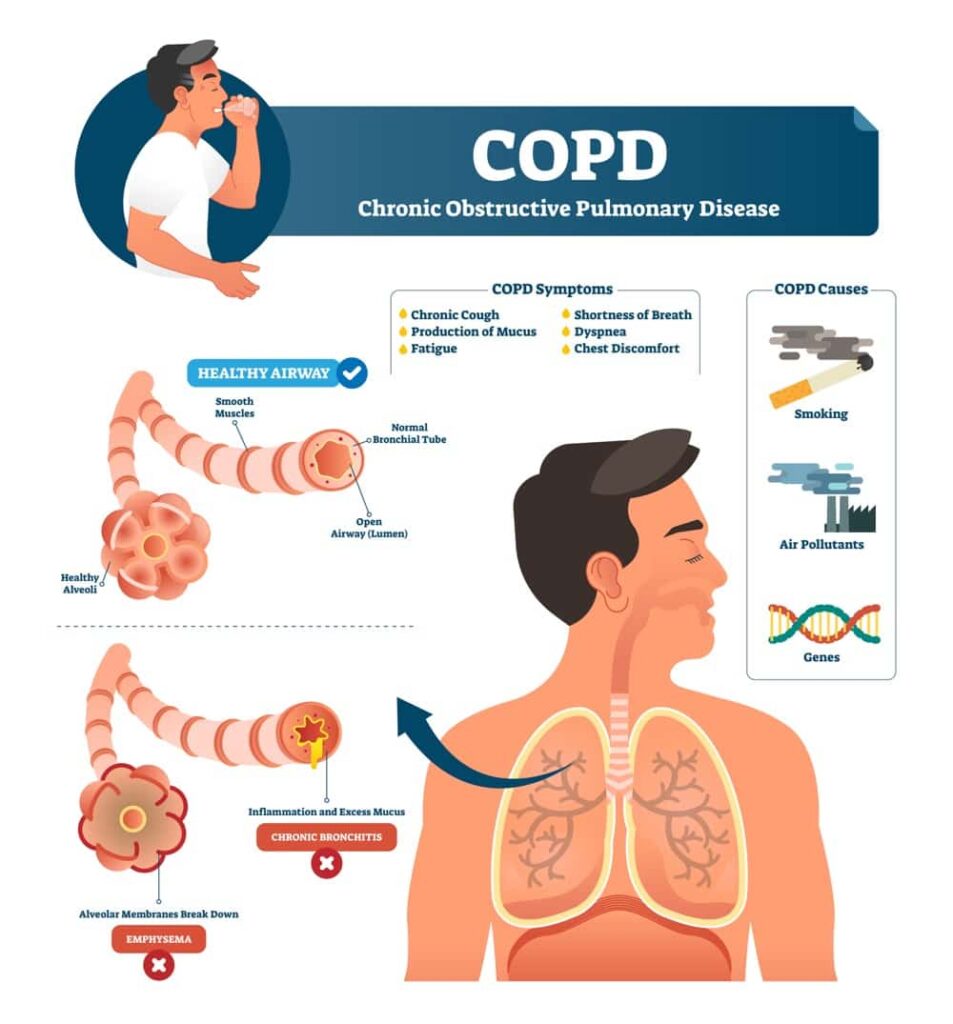Chronic Obstructive Pulmonary Disease, also known as COPD, is a respiratory disease that affects 32 million patients only in the United States. It ranks third as a cause of death and is a preventable cause of illness in many cases. There’s a classic triad in COPD that includes three different health problems: emphysema, chronic bronchitis, and asthma. COPD patients usually have a combination of two, and sometimes all three simultaneously.
Chronic bronchitis is a progressive respiratory problem featuring productive cough for a minimum of 3 months. Other causes of chronic cough are excluded, and the patient had these long cough episodes for at least two years.
Emphysema is another respiratory problem that develops over many years, usually due to chronic tobacco smoking. Emphysema features anatomic issues in the chest caused by an enlargement in the air spaces of the lungs. The walls of the airways are destroyed, and sometimes a fibrous tissue forms, similar to a scar.

Asthma is an autoimmune problem combined with allergies. It causes inflammation in the airways and promotes changes in the walls. They become thick and start to secrete mucus.
Altogether, these entities are apparently different but have many things in common. Moreover, they often overlap in the same patient, and the severity of one triggers the other.
In this article, we will go through the most important signs and symptoms of chronic obstructive pulmonary disease (COPD). We will break them down into four groups. First, we will cover COPD symptoms in general and then specific signs and symptoms of COPD found in patients with chronic bronchitis, emphysema, and asthma.
COPD symptoms in general:
